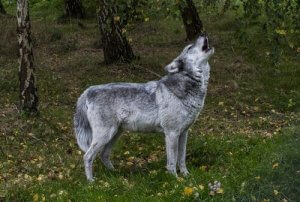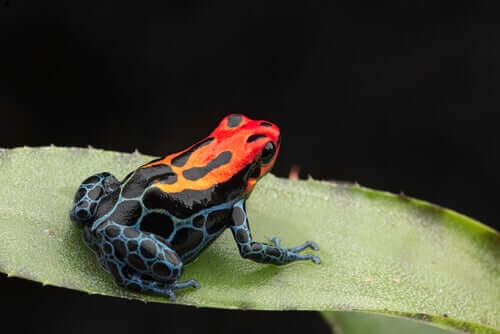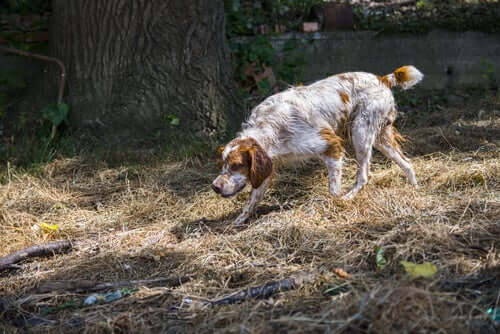The Difference Between Domestic Animals and Wild Animals

All of us know that animals are free by nature. It wasn’t until the intervention of man that their habits started to change from one generation to the next. We can see these changes, for example, in cats and dogs – wild animals that have been domesticated and now live with us in our homes. Today, we’ll take a close look at the differences between domestic animals and wild animals.
Selection and adaptation
Life, among its most notable aspects, has the capacity to adapt to any environment that surrounds it. This is known as micro-evolution. Animals make up part of the chain of life, and that’s why we see the different breeds and species that live alongside us on a daily basis.
But what’s the difference between domestic animals and wild animals? What sets them apart from one another? Well, some of you may already know the answer, but it may come as a surprise to many.
Before we delve into explaining these differences, we have to talk first about what characterizes wild animals – their attitude and aspect in general. We can’t talk about every single species, given how much information there is about each one. However, we can speak about some aspects that are similar among them.
One of the qualities that stands out the most when it comes to wild animals has to do with their attitude when they approach elements that catch their attention. Most wild animals are extremely cautious. Why? Because it could be a matter of life and death at the hands of a predator that’s out to kill them.
Another interesting quality of wild animals has to do with their physical appearance. Many animals use their fur and skin in order to blend in with their environments in order to better stalk their prey. But not only do their skin and fur serve as camouflage but also as a way to warn any daring predators.

Colors are a sort of warning system that alerts other possible predators about the qualities that an animal possesses. Most of the time, they’re a sign of danger. For example, a species that’s poisonous may demonstrate this with bright colors. In the same way, there are other animals with bright colors that aren’t actually poisonous at all, and they survive by deceiving others.
Adaptation and domestication
Wolves were the first wild animals that man domesticated. Experts believe that this process occurred because a member of our species started to share its food with a puppy or a young adult wolf. And, in doing so, managed to bridge the gap between the two species.
This process repeated itself an infinite number of times, resulting in the great variety of dog breeds that exist today. It didn’t only happen with dogs, but also with wild cats and other animals that we now know as farm animals.
The characteristics of these domestic animals are many. Unlike wild animals, they tend not to distance themselves too much from human beings. Therefore, they lose a bit of the freedom and curiosity that defines them.
In the same way, their fur gradually loses the rustic tone that adapted to its original habitat in nature. And, at the same time, it takes on an appearance that’s friendlier and more visually acceptable to the human eye. In most cases, we no longer see tones that blend into the environment or bright and bold colors that warn of danger.
Many animals display physical transformations that they pass on from one generation to the next. For example, they are much smaller in size in order to be more attractive to human beings. What’s more, some even transform parts of their bodies in order to seem friendlier and more desirable.
Also, many breeds display a noticeable decrease in aggression towards other objects, be they living or inanimate. Many breeds take on a rather playful and childlike attitude that’s very endearing to human beings, and this maximizes their potential as pets.
The differences between domestic animals and wild animals: Everything according to its function
We’ve already looked at the characteristics of domestic animals and wild animals and, for the most part, we’ve answered the question we asked at the beginning of the article. In short, we can say that wild animals are more aggressive and better adapted to the environment around them.
In the same way, domestic animals adapt according to the functions that human beings have designed for them over time.

When it comes to birds – especially chickens – we raise them as an easily accessible source of food. This saves us the work of having to go out and find our food in the wild, exposing ourselves to dangerous predators. Hunting is a competition of the fittest where the loser pays with its life – and we’re not only talking about prey.
What’s true is that we maintain a balance between domestic animals and wild animals, given that both fulfill different functions in the world’s ecosystem. Having too many specimens of one species can lead to an imbalance in the chain of life.
All of us know that animals are free by nature. It wasn’t until the intervention of man that their habits started to change from one generation to the next. We can see these changes, for example, in cats and dogs – wild animals that have been domesticated and now live with us in our homes. Today, we’ll take a close look at the differences between domestic animals and wild animals.
Selection and adaptation
Life, among its most notable aspects, has the capacity to adapt to any environment that surrounds it. This is known as micro-evolution. Animals make up part of the chain of life, and that’s why we see the different breeds and species that live alongside us on a daily basis.
But what’s the difference between domestic animals and wild animals? What sets them apart from one another? Well, some of you may already know the answer, but it may come as a surprise to many.
Before we delve into explaining these differences, we have to talk first about what characterizes wild animals – their attitude and aspect in general. We can’t talk about every single species, given how much information there is about each one. However, we can speak about some aspects that are similar among them.
One of the qualities that stands out the most when it comes to wild animals has to do with their attitude when they approach elements that catch their attention. Most wild animals are extremely cautious. Why? Because it could be a matter of life and death at the hands of a predator that’s out to kill them.
Another interesting quality of wild animals has to do with their physical appearance. Many animals use their fur and skin in order to blend in with their environments in order to better stalk their prey. But not only do their skin and fur serve as camouflage but also as a way to warn any daring predators.

Colors are a sort of warning system that alerts other possible predators about the qualities that an animal possesses. Most of the time, they’re a sign of danger. For example, a species that’s poisonous may demonstrate this with bright colors. In the same way, there are other animals with bright colors that aren’t actually poisonous at all, and they survive by deceiving others.
Adaptation and domestication
Wolves were the first wild animals that man domesticated. Experts believe that this process occurred because a member of our species started to share its food with a puppy or a young adult wolf. And, in doing so, managed to bridge the gap between the two species.
This process repeated itself an infinite number of times, resulting in the great variety of dog breeds that exist today. It didn’t only happen with dogs, but also with wild cats and other animals that we now know as farm animals.
The characteristics of these domestic animals are many. Unlike wild animals, they tend not to distance themselves too much from human beings. Therefore, they lose a bit of the freedom and curiosity that defines them.
In the same way, their fur gradually loses the rustic tone that adapted to its original habitat in nature. And, at the same time, it takes on an appearance that’s friendlier and more visually acceptable to the human eye. In most cases, we no longer see tones that blend into the environment or bright and bold colors that warn of danger.
Many animals display physical transformations that they pass on from one generation to the next. For example, they are much smaller in size in order to be more attractive to human beings. What’s more, some even transform parts of their bodies in order to seem friendlier and more desirable.
Also, many breeds display a noticeable decrease in aggression towards other objects, be they living or inanimate. Many breeds take on a rather playful and childlike attitude that’s very endearing to human beings, and this maximizes their potential as pets.
The differences between domestic animals and wild animals: Everything according to its function
We’ve already looked at the characteristics of domestic animals and wild animals and, for the most part, we’ve answered the question we asked at the beginning of the article. In short, we can say that wild animals are more aggressive and better adapted to the environment around them.
In the same way, domestic animals adapt according to the functions that human beings have designed for them over time.

When it comes to birds – especially chickens – we raise them as an easily accessible source of food. This saves us the work of having to go out and find our food in the wild, exposing ourselves to dangerous predators. Hunting is a competition of the fittest where the loser pays with its life – and we’re not only talking about prey.
What’s true is that we maintain a balance between domestic animals and wild animals, given that both fulfill different functions in the world’s ecosystem. Having too many specimens of one species can lead to an imbalance in the chain of life.
This text is provided for informational purposes only and does not replace consultation with a professional. If in doubt, consult your specialist.








